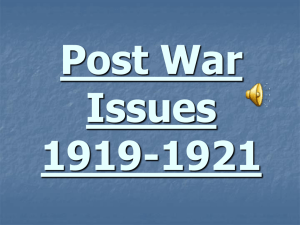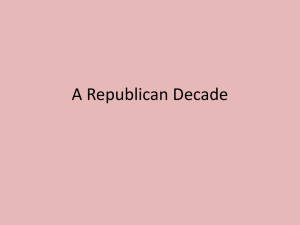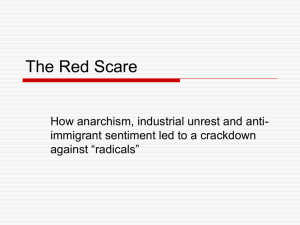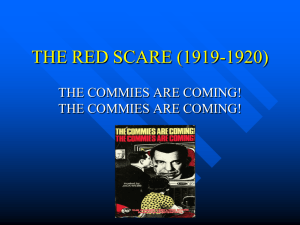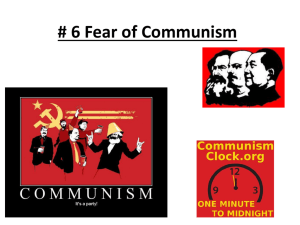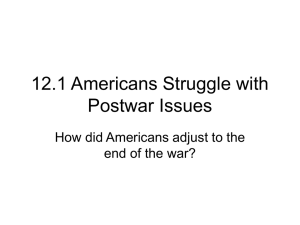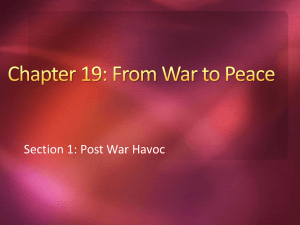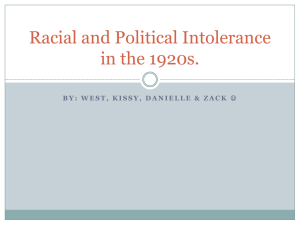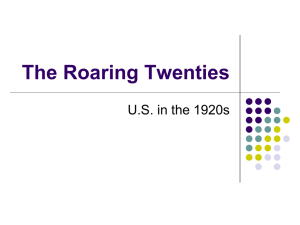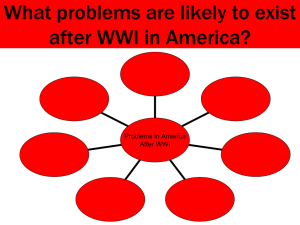Chapter 21 Section 1
advertisement
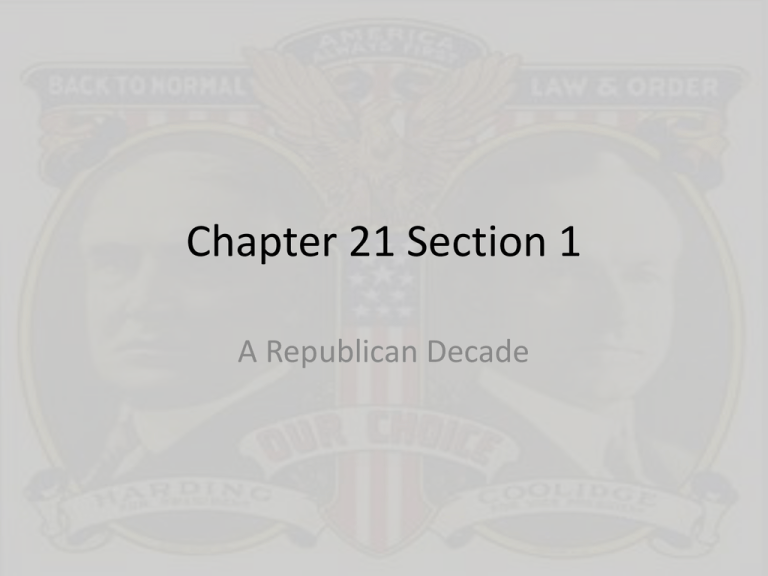
Chapter 21 Section 1 A Republican Decade What kind of leadership were American seeking in the early 1920s? • Americans wanted strong, reassuring leaders who promised stability and prosperity. • Normalcy Communism • Government owns all land and property • 1 political party • Needs of the country more important than the needs of the individual • Lenin sought to spread communism throughout the world • After Lenin came Josef Stalin whose brutal policies spread communism and killed tens of millions Free Enterprise System • Economic system characterized by private or corporate ownership of land or products Red Scare • A fear of communism and other radical ideas – Americans wanted communists jailed and deported Why did Communism seem to pose a threat to capitalist (or free enterprise) nations? • Communism goes against everything people in a capitalist system believe in – No private property – One party government – Individual rights A. Mitchell Palmer • A. Mitchell PalmerAttorney General of the U.S. • Had bomb mailed to his home • Became convinced that radicals were conspiring to overthrow the government • Began a campaign to hunt down radicals What did A. Mitchell Palmer do in response to bombings that he suspected radicals to be responsible for? • Conducted raids and arrests against suspected subversives • Targeted Communists, socialists, and anarchists The Palmer Raids • Palmer said there would be a general strike and widespread bombings on May 1, 1920 • Newspapers predicted a major crisis • Never happened • Palmer lost influence and credibility Why might some consider Palmer’s actions to be controversial or unconstitutional? • Arrested thousands, sometimes without evidence – Many of them eventually deported Sacco and Vanzetti • 2 men robbed and killed 2 men working at a shoe factory in 1920 • Police arrest 2 Italian Immigrants for the crime • Nicola Sacco and Bartolomeo Vanzetti • Both men were anarchists Sacco and Venzetti • Both men were carrying guns • Sacco’s gun matched the one used at the crime • Many suspected that they were only arrested because they were immigrants and their political beliefs What was Sacco and Vanzetti’s fate and why might there be a problem with it? • Both men found guilty • Trial may have been unfair – Evidence circumstantial – Judge used racial slurs – Both executed – Note: modern technology proved they committed the crime…so don’t feel too bad Isolationism • Avoid economic and political alliances with foreign countries • Opposed League of Nations How did the Red Scare contribute to America’s policy of isolationism in the 1920s? • Many of the suspected radicals swept up in the Palmer raids were immigrants • This contributed to the desire of Americans to adopt an isolationist stance Disarmament • A program in which the nations of the world would voluntarily give up their weapons – A goal of President Harding Nativism • A movement favoring native born Americans over immigrants What are 4 reasons why nativism flared up after World War I? • Patriotism- believed foreigners could never be loyal to the U.S. • Religion- Protestants, Catholics, and Jews could not see eye to eye • Urban conditionsurban problems blamed on immigrants • Jobs-immigrants were taking them • RedScare Quota • A limit • 1921 law passed to restrict immigration • Placed a quota on immigrants representing certain ethnic groups or nations Teapot Dome Scandal • Harding not involved…but his people were • Albert B. Fall (Secretary of the Interior) secretly gave oil drilling rights on government property to 2 private oil companies • Fall received $300,000 in illegal payments and gifts in return Kellogg-Briand Pact • 15 nations pledged not to use the threat of force in their dealings with other nations • 60 nations eventually joined the pact • Basically made war illegal • Unrealistic and unenforceable How did the Kellogg-Briand Pact reflect Republican foreign policy in the 1920s? • This pact reflected the republican desire to avoid foreign wars.

